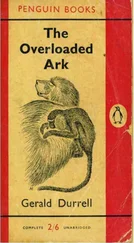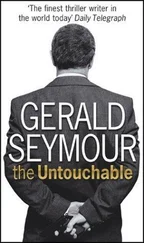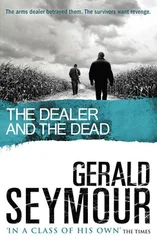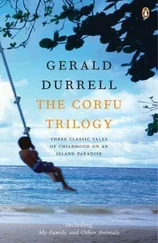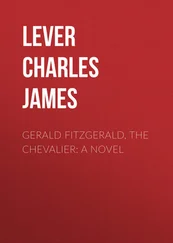Dr Raisin, for example, says that it was not designed as a bottle at all, but rather as a musical instrument: a curious combination of the ocarina and the syrinx, because it has three delicately curved slender necks, and immediately below the middle neck, which is the longest, there is something like a finger-hole. But in the opinion of Sir Cecil Sampson, who is a leading authority on ancient musical instruments, the Oxoxoco Bottle was never constructed to throw back sounds. Professor Miller, however, inclines to the belief that the Oxoxoco Bottle is a kind of tobacco pipe: the two shorter necks curve upwards while the longer neck curves downwards to fit mouth and nostrils. Professor Miller indicates that smouldering herbs were dropped in at the ‘finger-hole’ and that the user of the bottle must have inhaled the smoke through all his respiratory passages.
I have reason to believe that Professor Miller has guessed closest to the truth although, if the document in my possession is genuine, it was not tobacco that they burned in the squid-shaped body of the bottle.
It was intact, except for a few chips, when I bought it from a mestizo pedlar in Cuernavaca in 1948. ‘Genuine,’ he said; and this seemed to be the only English word he knew: ‘genuine, genuine.’ He pointed towards the mountains and conveyed to me by writhings and convulsions, pointing to earth and sky, that he had picked the bottle up after an earthquake. At last I gave him five pesos for it, and forgot about it until I found it several years later while I was idling over a mass of dusty souvenirs: sombreros, huaraches, a stuffed baby alligator, and other trifles, such as tourists pick up in their wanderings, pay heavily for, and then give away to friends who consign them to some unfrequented part of the house.
The straw hats and other plaited objects had deteriorated. The stitches in the ventral part of the little alligator had given way, and the same had happened to the little Caribbean sting-ray. But the vessel later to be known as the Oxoxoco Bottle seemed to glow. I picked it up carelessly, saying to a friend who was spending that evening with me: ‘Now what this is, I don’t know——’ when it slipped from between my dusty fingers and broke against the base of a brass lamp.
My friend said: ‘Some sort of primitive cigar-holder, I imagine. See? There’s still a cigar inside it…. Or is it a stick of cinnamon?’
‘What would they be doing with cinnamon in Mexico?’ I asked, picking up this pale brown cylinder. It had a slightly oily texture and retained a certain aromatic odour. ‘What would you make of a thing like that?’
He took it from me gingerly, and rustled it at his ear between thumb and forefinger much in the manner of a would-be connoisseur ‘listening to’ the condition of a cigar. An outer leaf curled back. The interior was pale yellow. He cried: ‘Bless my heart, man, it’s paper – thin paper – and written on, too, unless my eyes deceive me.’
So we took the pieces of the bottle and that panatella-shaped scroll to the British Museum. Professor Mayhew, of Ceramics, took charge of the broken bottle. Dr Wills, of Ancient Manuscripts, went to work on the scroll with all the frenzied patience characteristic of such men, who will hunch their backs and go blind working twenty years on a fragment of Dead Sea scroll.
Oddly enough, he had this paper cigar unrolled and separated into leaves within six weeks, when he communicated with me, saying: ‘This is not an ancient manuscript. It is scarcely fifty years old. It was written in pencil, upon faint-ruled paper torn out of some reporter’s notebook not later than 1914. This is not my pigeon. So I gave it to Brownlow, of Modern Manuscripts. Excuse me.’ And he disappeared through a book-lined door in the library.
Dr Brownlow had the papers on his table, covered with a heavy sheet of plate-glass. He said to me, in a dry voice: ‘If this is a hoax, Mr Kersh, I could recommend more profitable ways of expending the Museum’s time and your own. If this is not a hoax, then it is one of the literary discoveries of the century. The Americans would be especially interested in it. They could afford to buy it, being millionaires. We could not. But it is curious, most curious.’
‘What is it?’ I asked.
He took his time, in the maddening manner of such men, and said: ‘Considering the advanced age of the putative author of this narrative, there are certain discrepancies in the handwriting. The purported author of this must have been a very old man in about 1914, at which I place the date of its writing. Furthermore, he suffered with asthma and rheumatism. Yet I don’t know. If you will allow me to make certain inquiries, and keep this holograph a few days more …?’
I demanded: ‘What man? What rheumatism? What do you mean?’
He said: ‘Beg pardon, I thought you knew. This –’ and he tapped the plate-glass ‘– pretends to be the last written work of the American author, Ambrose Bierce. I have taken the liberty of having it photographed for your benefit. If we may keep this until next Monday or so for further investigation …?’
‘Do that,’ I said, and took from him a packet of photographs, considerably enlarged from the narrow notebook sheets.
‘He was a great writer!’ I said. ‘One of America’s greatest.’
The Modern Manuscripts man shrugged. ‘Well, well. He was in London from 1872 to 1876. A newspaperman, a newspaperman. They used to call him “Bitter” Bierce. When he went back to America he worked – if my memory does not deceive me – mainly in San Francisco, wrote for such publications as The Examiner, The American, Cosmopolitan, and such-like. Famous for his bitter tongue and his ghostly stories. He had merit. Academic circles in the United States will give you anything you like for this – if it is genuine. If … Now I beg you to excuse me.’ Before we parted, he added, with a little smile: ‘I hope it is genuine, for your sake and ours – because that would certainly clear up what is getting to be a warm dispute among our fellows in the Broken Crockery Department …’
* * *
Mount Popocatepetl looms over little Oxoxoco which, at first glance, is a charming and picturesque village, in the Mexican sense of the term. In this respect it closely resembles its human counterparts. Oxoxoco is picturesque and interesting, indeed; at a suitable distance, and beyond the range of one’s nostrils. Having become acquainted with it, the disillusioned traveller looks to the snowy peak of the volcano for a glimpse of cool beauty in this lazy, bandit-haunted, burnt-up land. But if he is a man of sensibility, he almost hopes that the vapours on the peak may give place to some stupendous eructation of burning gas, and a consequent eruption of molten lava which, hissing down into the valley, may cauterise this ulcer of a place from the surface of the tormented earth, covering all traces of it with a neat poultice of pumice stone and a barber’s dusting of the finest white ashes.
They used to call me a good hater. This used to be so. I despised my contemporaries, I detested my wife – a feeling she reciprocated – and had an impatient con tempt for my sons; and for their grandfather, my father. London appalled me, New York disgusted me, and California nauseated me. I almost believe that I came to Mexico for something fresh to hate. Oxco, Taxco, Cuernavaca – they were all equally distasteful to me, and I knew that I should feel similarly about the (from a distance enchanting) village of Oxoxoco. But I was sick and tired, hunted and alone, and I needed repose, because every bone in my body, at every movement, raised its sepulchral protest. But there was to be no rest for me in Oxoxoco.
Once the traveller sets foot in this village, he is affronted by filth and lethargy. The men squat, chin on knee, smoking or sleeping. There is a curious lifelessness about the place as it clings, a conglomeration of hovels, to the upland slope. There is only one half-solid building in Oxoxoco, which is the church. My views on religion are tolerably well known, but I made my way to this edifice to be away from the heat, the flies, and the vultures which are the street cleaners of Oxoxoco. (In this respect it is not unlike certain other cities I have visited, only in Oxoxoco the vultures have wings and no politics.) The church was comparatively cool. Resting, I looked at the painted murals. They simply christen the old bloody Aztec gods and goddesses – give them the names of saints – and go on worshipping in the old savage style.
Читать дальше



